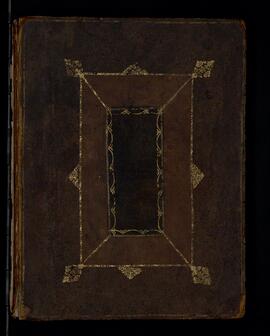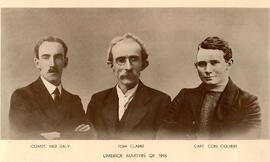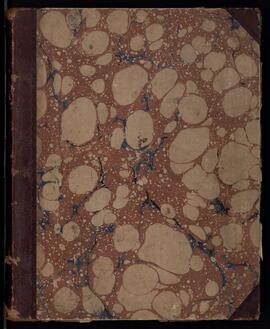Manuscript entitled ‘The Irish Establishment’ comprising 44 gilt-edged leaves totalling 88 pages, 12 of which are blank, in Cambridge panel calf binding contemporaneous with the contents. The document bears the official title ‘Anne R. An Establishment or List containing all Payments to be made for Civil Affairs from the Twenty fifth day of March 1704 in the Third Year of our Reign for the Kingdom of Ireland.’ It is one of several copies of a formal register of annual payments to be made to maintain the civil and military offices in Ireland at the expense of the sovereign.
The document commences with the civil list, outlining masters’ fees and other expenditure of the courts of the Exchequer, Queen’s Bench, Chancery and Common Pleas and those of the officers and ministers attending the state, customs officers, commissioners of appeals and non-conforming ministers. Also listed are payments towards perpetuities and pensions, the upkeep of lighthouses and payments made out of the concordatum fund for ‘extraordinaries’, such as ‘keeping poor Prisoners & Sick & Maimed Soldiers in Hospitals’. There is also a 13-page list of the names of French soldiers to whom pensions were to be paid following the disbanding of the French regiments that served in Ireland.
The civil list is followed by the military list, which includes allocations of money towards military contingencies and incidents and the maintenance and upkeep of regiments of horse, dragoons and foot and superior and inferior officers in charge of the Ordnance. The third and final list records payments to be made to half-pay officers and governors of garrisons, military pensions and the annual charge for maintaining and upholding all the barracks in the four provinces of Ireland. The document also provides a summary of increases and decreases in certain annual payments.
The manuscript is either incorrectly bound, or faithfully copied from an incorrectly bound version. Text on p. 56 ends mid-sentence and continues on p. 73. Pages 57-72 should follow p. 73, except for pp. 71-72, which should follow p. 80.
A number of previous owners have left their mark on the document. These include Simon Cavan, who signed p. 88 with the note ‘Simon Cavan his Book Anno Domini 1785’. The signature ‘H. Cotton’ appears on the endpaper at the beginning of the book and on the title page. This was Henry Cotton (1789-1879), Archdeacon of the Diocese of Cashel from 1824 until 1872, who previous to that appointment served in Cashel as librarian at the Bolton Library and domestic chaplain to his father-in-law Richard Laurence, who was appointed Archbishop of Cashel in 1822. There are no shelf or other marks to identify this particular volume as having ever formed part of the Bolton Library and must therefore have been part of Cotton’s private book collection.
The endpaper and flyleaf at the beginning of the book bear the stamp ‘C. A. Vignoles’ left by the very Reverend Charles Augustus Vignoles (1789-1877), Dean of Ossory and Dean of the Chapel Royal, Dublin, a fourth-generation Huguenot from Portarlington. Finally, the inside cover is signed ‘Herbert C. C. Uniacke Clogheen Co Tipperary December 1903’. This was Lieutenant General Sir Herbert Crofton Campbell (1866-1934), an officer of the Royal Artillery.
Anne, Queen of Great Britain and Ireland (1665-1714)



